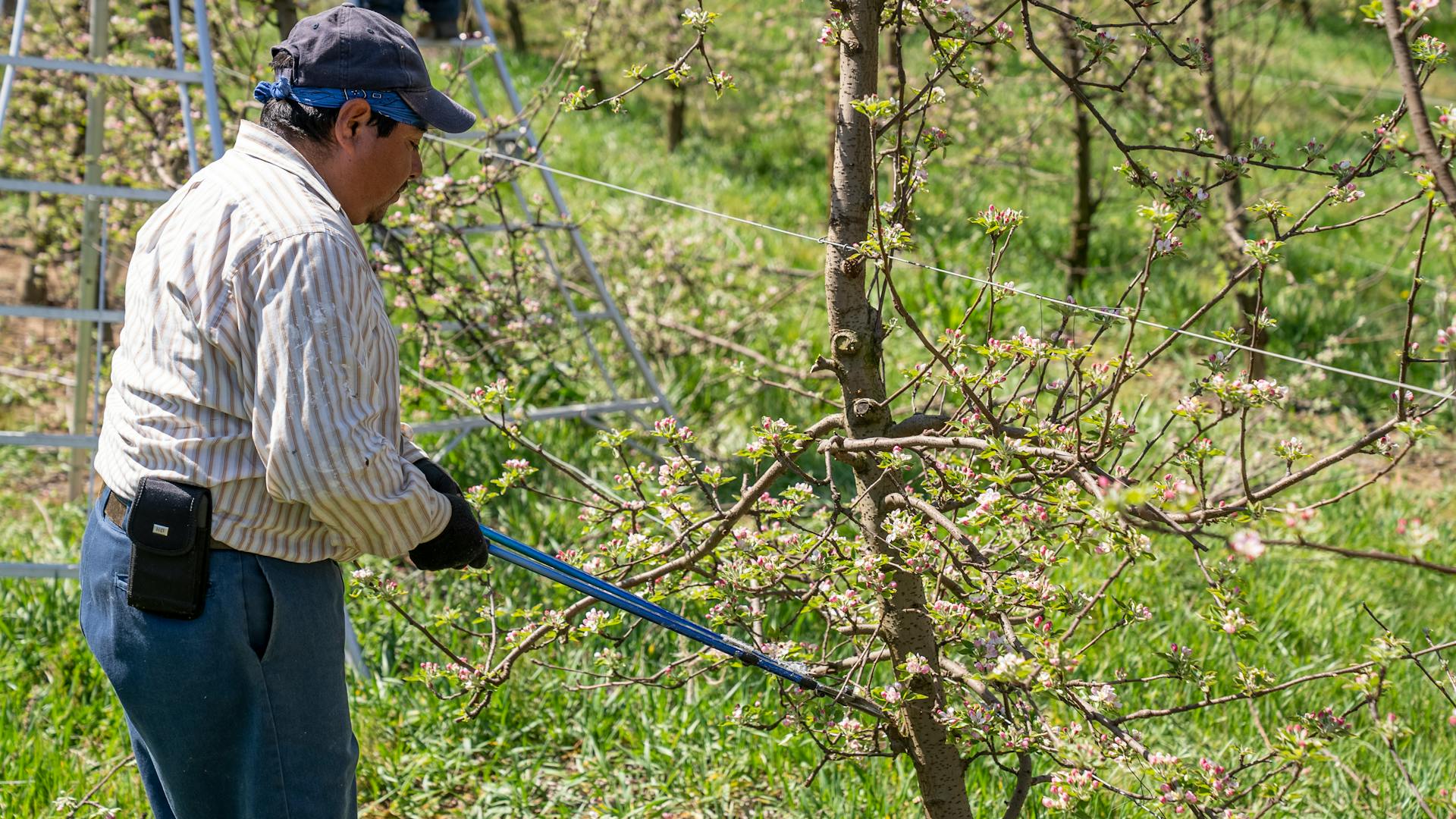
Tree Blog
Our Blog

Understanding The Difference Between Trimming And Pruning
Taking care of trees can seem like a giant task, but it's a rewarding one that keeps your yard healthy and beautiful. A big part of tree care involves trimming and pruning. While they might sound similar, they have different roles in making sure trees stay strong and look nice. Trimming and pruning are essential tasks, adapting to the unique climate in Sioux City, ensuring trees remain vibrant year-round.
Think of tree maintenance like regular check-ups at the doctor's office. Just like how we visit the doctor to stay healthy, trees need routine care to handle whatever nature throws their way. By understanding the differences between trimming and pruning, you can give your trees just what they need at the right time. This guide will walk you through these key tasks, offering clarity on each process and why it matters.
The Basics of Tree Trimming
Tree trimming involves cutting back overgrown branches. It’s a bit like giving your tree a haircut. The main aim is to shape the tree and remove branches that are not needed. In Sioux City, trimming helps to maintain not just the beauty of your yard but also the health and safety of the spaces around it.
Why do you need to trim trees? Here are some common reasons:
- Safety Concerns: Overgrown branches can become hazards, especially when they hang over rooftops, vehicles, or power lines.
- Health Improvement: Trimming helps remove diseased or damaged limbs, which can prevent the spread of disease to other parts of the tree.
- Aesthetic Appeal: Keeps the yard looking tidy and prevents the tree from growing in unexpected ways.
Regular trimming brings with it several benefits. It helps to improve sun exposure and air circulation throughout the tree, which can help prevent mold and mildew on leaves and branches. Plus, well-trimmed trees contribute to the overall appearance of your property, adding to the curb appeal and even boosting property value. Knowing when and how to trim can save big headaches later, ensuring your trees stay healthy and safe.
The Basics of Tree Pruning
Tree pruning is a bit different from trimming. Instead of focusing on shaping, pruning is about helping the tree grow strong and healthy. It's like giving the tree a path to follow in its growth journey. Pruning involves removing branches that might be dead, diseased, or just growing in the wrong direction.
Here are some common reasons to prune your trees:
- Promote Healthy Growth: By cutting away branches that aren’t necessary, you help the tree focus on growing stronger.
- Prevent Disease: Removing parts of the tree that are diseased can stop illness from spreading to healthier sections.
- Enhance Fruit and Flower Production: For fruit trees and flowering varieties, pruning can lead to better fruit production and more beautiful blooms.
When done correctly, pruning offers several benefits. It ensures that sunlight and air reach every part of the tree, reducing the risk of diseases and improving the overall health. Additionally, regular pruning can guide the tree’s structure, preventing long-term issues and ensuring the tree grows in a balanced way. For example, an apple tree that's pruned regularly may produce more abundant and healthier apples.
Key Differences Between Trimming and Pruning
Though trimming and pruning both involve cutting back branches, their purposes set them apart. Trimming generally aims at making trees look tidy, while pruning focuses on health. Timing is another difference. Trimming happens more seasonally to maintain appearance, but pruning is best done during late winter or early spring when the tree is still dormant.
The tools used are also somewhat different. Trimming can often be handled with shears or trimmers, perfect for smaller branches. Pruning might require saws or pruners, especially when dealing with thicker limbs. Understanding these differences can help you decide what your tree needs and when.
The impact on tree health is another important factor. Pruning targets the tree's main structure, making careful cuts that lead to long-term health improvements. Trimming, while beneficial for aesthetics and safety, only loosely influences the structure unless overdone. So, for comprehensive care, both trimming and pruning play key roles in different aspects of tree maintenance.
When to Trim and When to Prune in Sioux City
In Sioux City, timing is everything when it comes to tree care. Trimming is often done in late spring or early summer when trees are actively growing. This helps to maintain a neat appearance and manage any rapid growth. On the other hand, pruning is usually best in late winter. At this time, trees are dormant, which means less stress on the tree and a reduced risk of disease.
Taking the local climate into account, Sioux City's winters can be harsh, so late winter pruning prepares trees for the growing season. Here are a few tips for getting the timing right:
- Trimming Tips: Wait until any threat of frost passes before you start trimming. This ensures the cuts heal properly.
- Pruning Tips: Look for the perfect window between late winter and early spring, when temperatures start to rise but before new growth begins.
Choosing the right time for these tasks can make a huge difference in keeping your trees both beautiful and healthy in Sioux City. Proper timing not only boosts growth but also enhances flowering and fruiting when applicable, ensuring that your yard looks its best year-round.
For peace of mind with your trees, the right care is what counts. Whether it's keeping them appealing or encouraging healthy growth, each tree has its own needs. Experience reliable and tailored solutions through professional tree trim services offered by Sioux City Tree Co. Our expertise ensures your yard stays in top shape, ready to face any season.
Home | Get a Quote | Privacy Policy | Contact | Blog
©2024 Sioux City Tree Co® - All rights reserved.
Created by Showcase 712